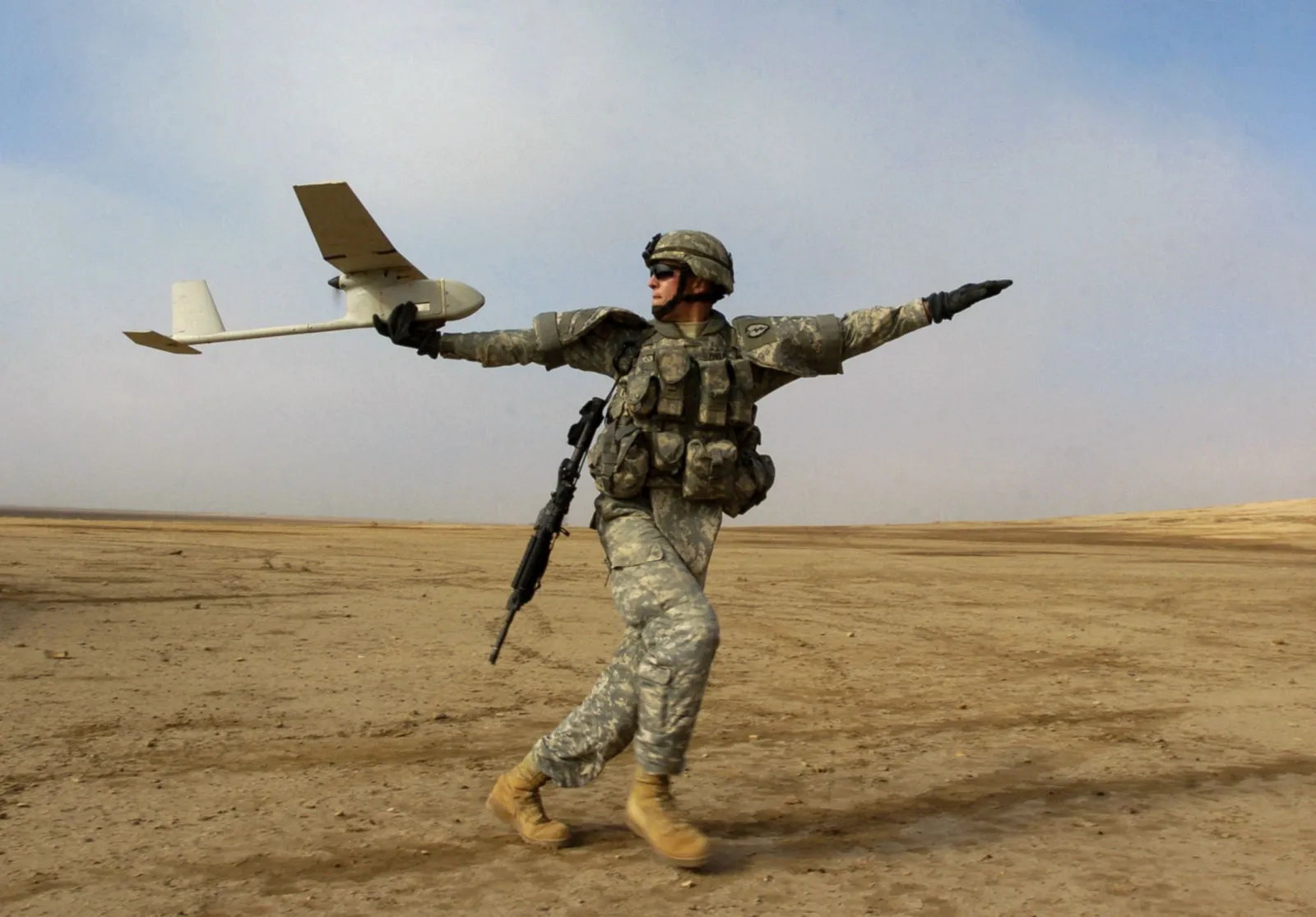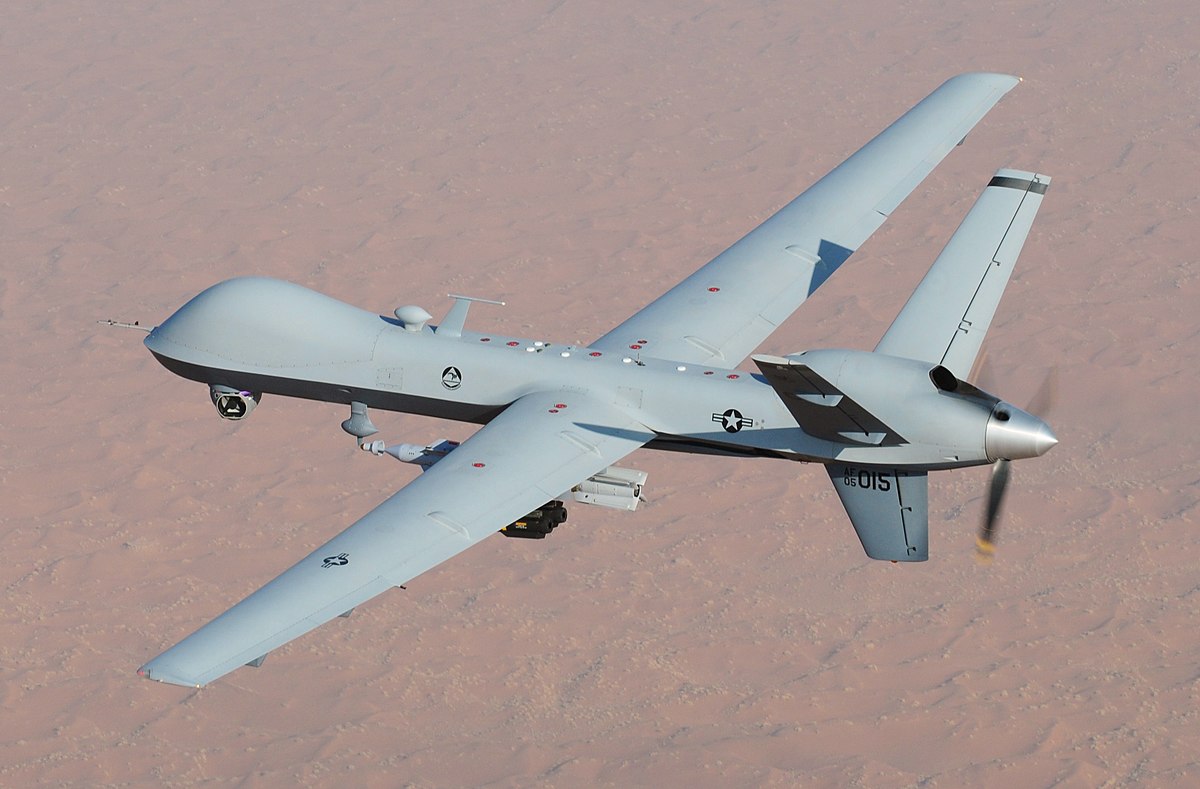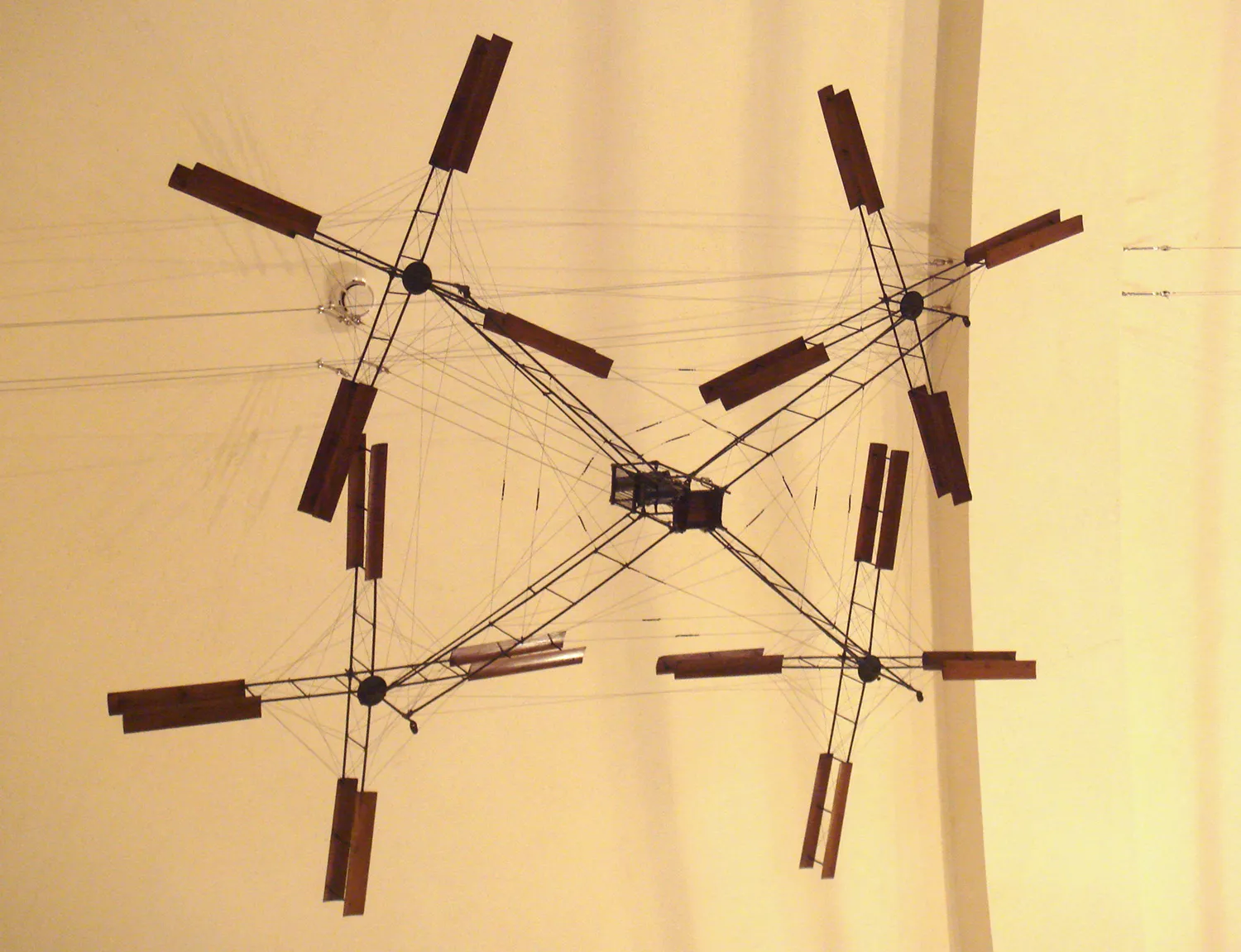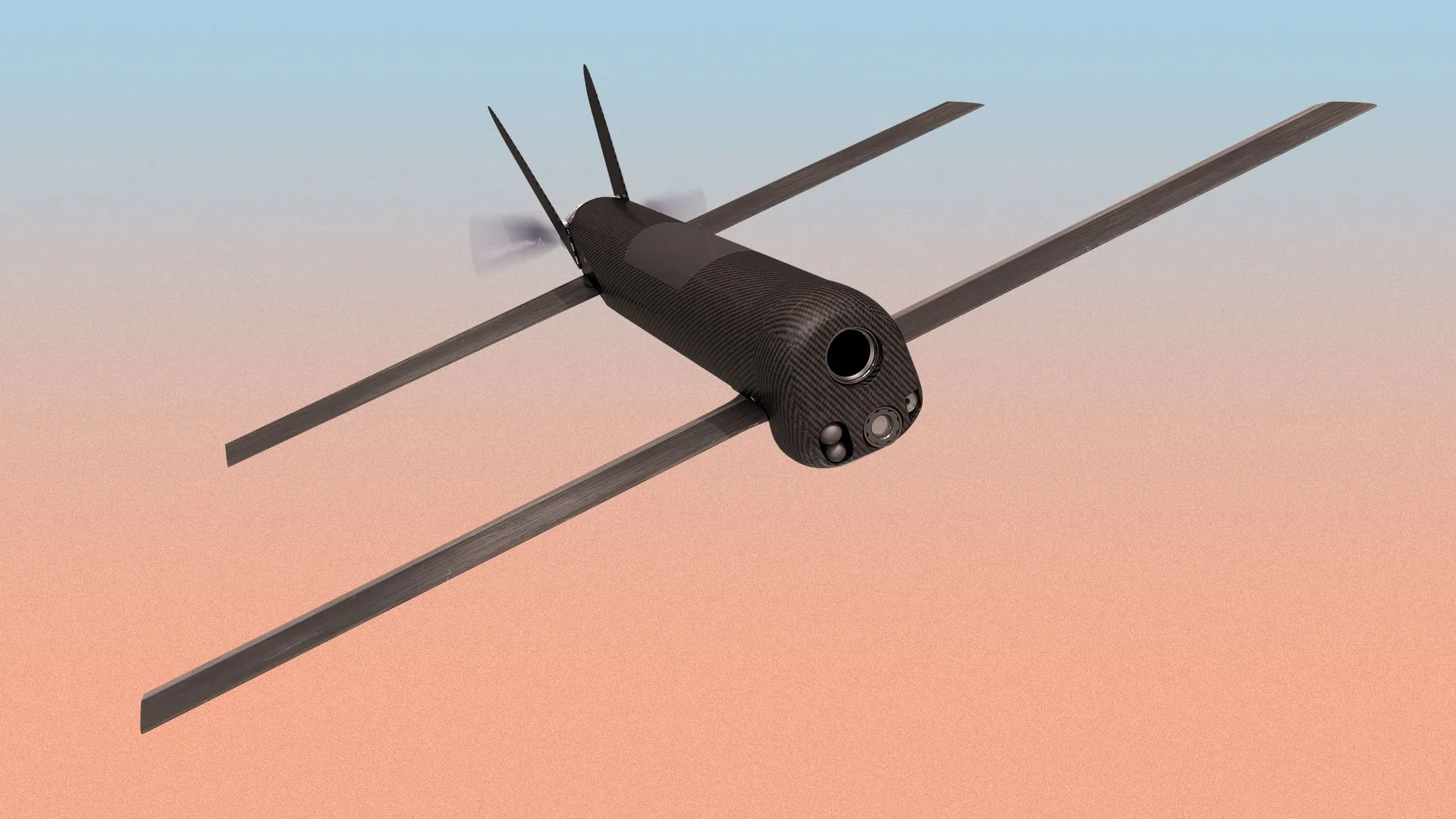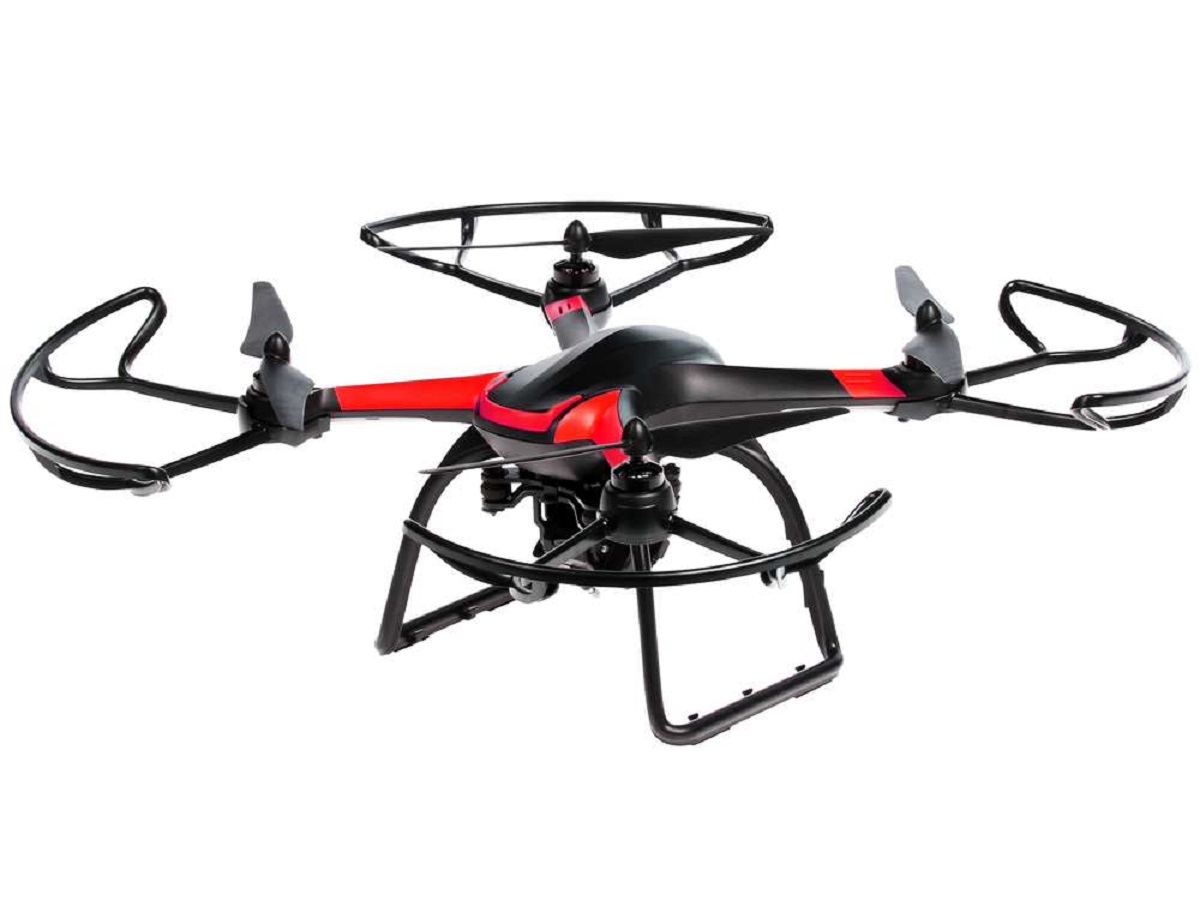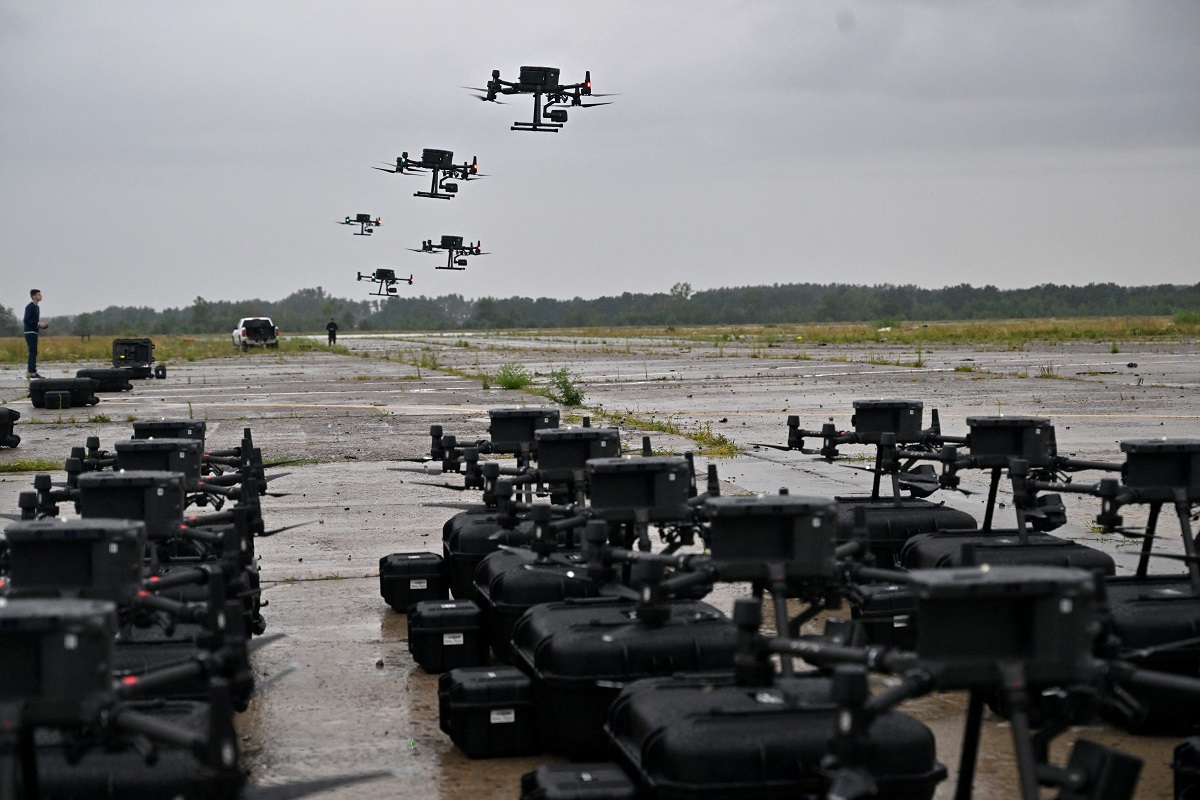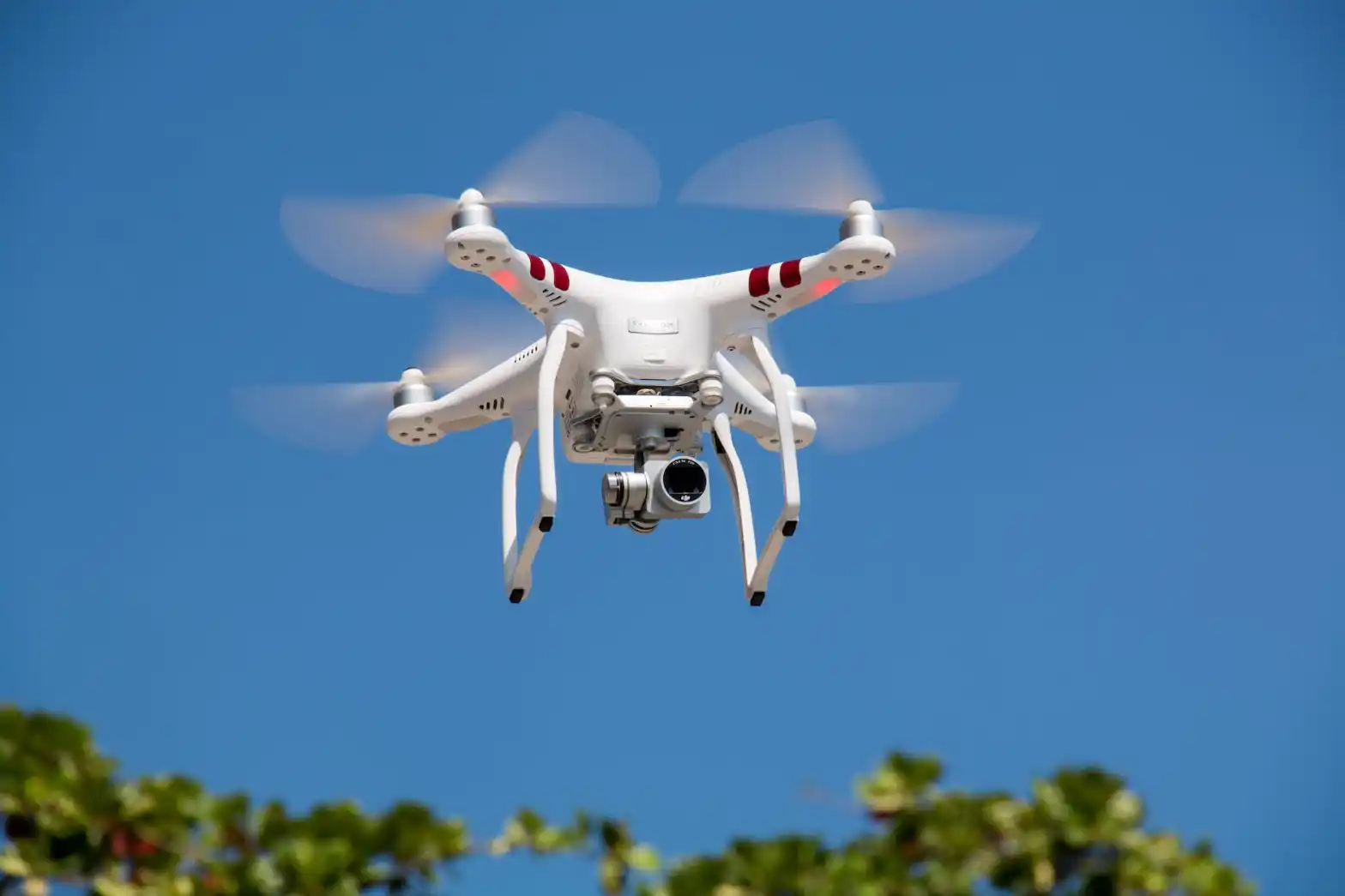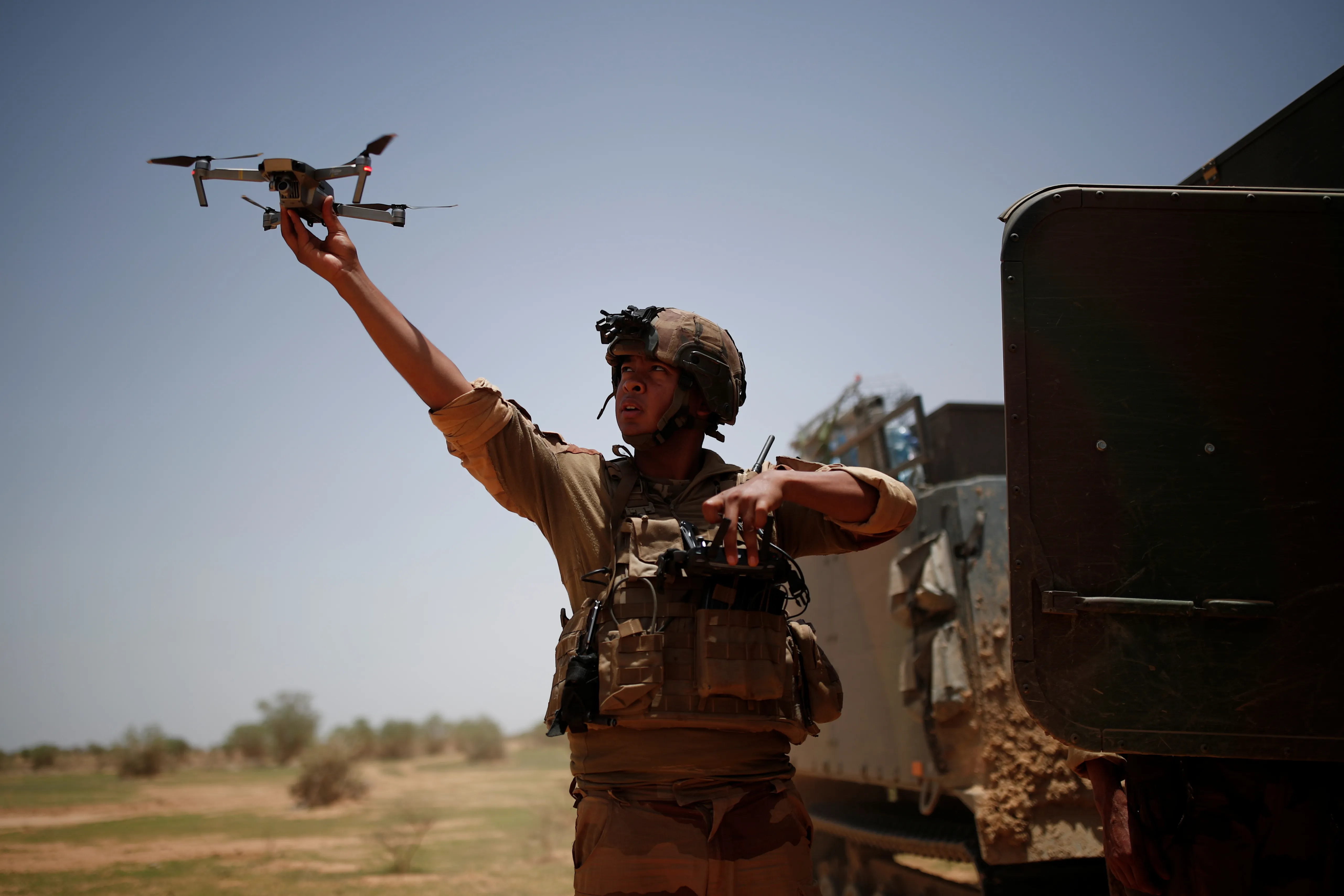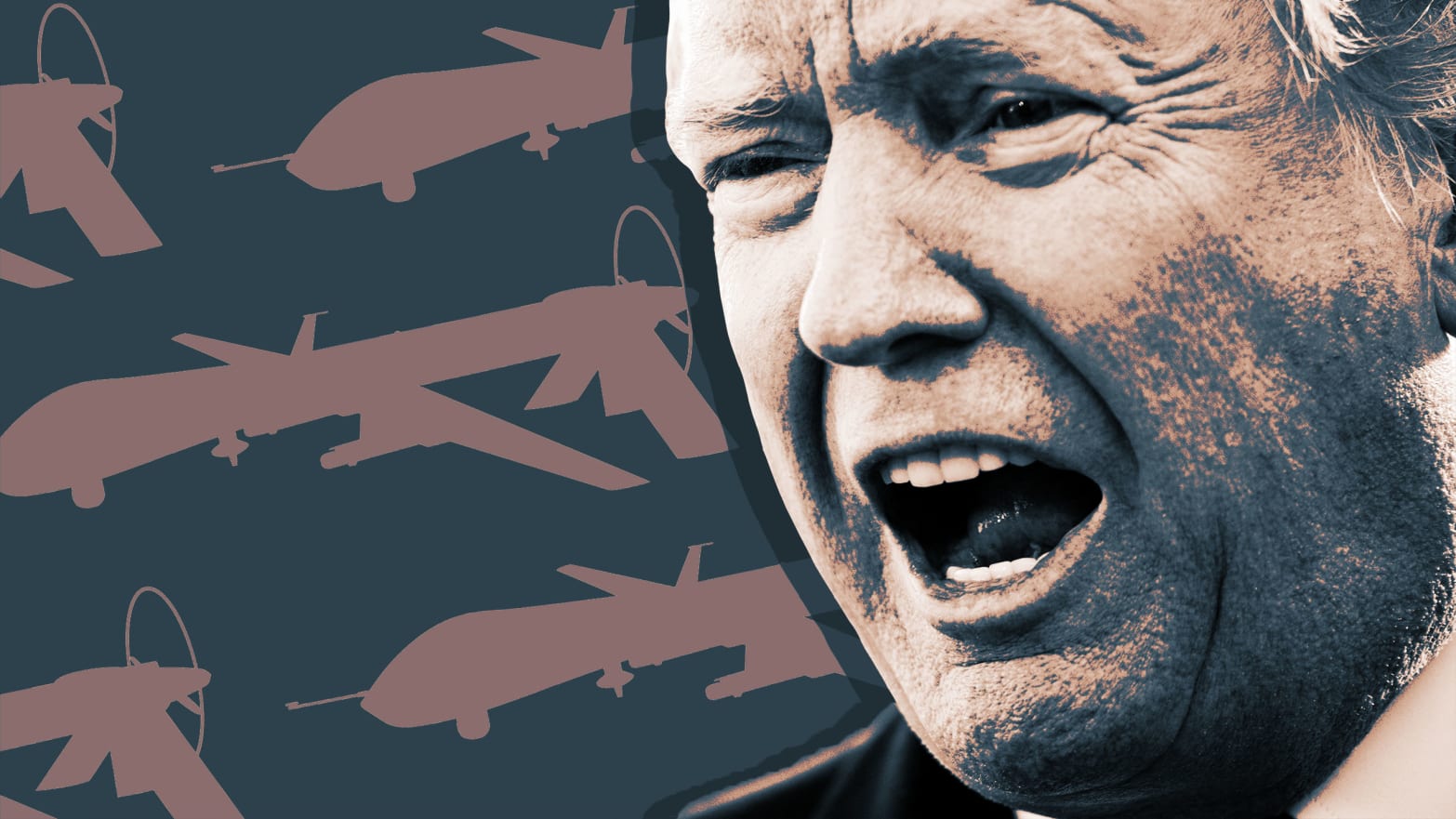Introduction
Military drones, also known as unmanned aerial vehicles (UAVs), have revolutionized modern warfare. These advanced technological marvels have become an integral part of military operations worldwide, offering a range of capabilities that were once inconceivable. With their ability to operate remotely and gather critical data in real-time, military drones have significantly impacted the way wars are fought and the strategies employed by armed forces.
Unlike traditional aircraft, military drones are not piloted by humans but are instead controlled by remote operators on the ground or through pre-programmed flight plans. Equipped with high-resolution cameras, sensors, and in some cases, lethal weapons, these unmanned aircraft provide military forces with a versatile and efficient tool for a wide array of missions.
In this article, we will explore the primary uses of military drones, shedding light on the vital roles they play in today’s battlefield. From surveillance and target acquisition to reconnaissance and intelligence gathering, military drones have revolutionized military tactics and significantly improved operational efficiency.
It is worth noting that while the following applications highlight the primary uses of military drones, their capabilities are constantly evolving and expanding as technology advances.
Surveillance
One of the primary uses of military drones is surveillance. Equipped with high-resolution cameras and advanced imaging technologies, these unmanned aircraft can provide real-time aerial surveillance over vast areas. Drones are capable of capturing detailed images and videos, allowing military operators to monitor and assess potential threats or enemy movements.
Military drones excel in providing persistent surveillance, as they can stay airborne for extended periods without needing to refuel. This prolonged presence allows them to actively monitor target areas or suspicious activities, providing valuable intelligence to military commanders on the ground.
Surveillance drones are designed to operate covertly, with low noise signatures and sophisticated camouflage techniques. This allows them to go undetected by hostile forces, increasing their effectiveness in gathering critical information without compromising the security of ongoing military operations.
Furthermore, the use of drones for surveillance minimizes the risk to human lives, as military personnel can remotely control the aircraft from a safe location away from potential danger zones. This reduces the need for boots on the ground in certain situations, enhancing the safety and efficiency of military operations.
Surveillance drones have proven to be invaluable in both offensive and defensive operations. They can be deployed to monitor enemy movements, gather intelligence on enemy positions, assess battlefield conditions, and provide situational awareness to ground forces. Additionally, drones can be used to deter potential threats, serving as a visual deterrent and preventing unauthorized access to sensitive military installations or restricted airspace.
In summary, surveillance is a crucial function of military drones, enabling military forces to gather real-time intelligence, monitor potential threats, and enhance overall situational awareness. The ability to conduct covert surveillance with minimal risks to human lives has made drones an indispensable asset in modern warfare.
Target Acquisition
Another vital use of military drones is target acquisition. With their advanced sensor systems and precise targeting capabilities, drones have revolutionized the process of identifying and acquiring targets in military operations.
Military drones are equipped with various technologies, including infrared sensors, electro-optical cameras, and radar systems, which enable them to detect and track potential targets with exceptional accuracy. These sensors can identify and classify objects, vehicles, and individuals, even in challenging environmental conditions such as low visibility or dense foliage.
By providing real-time imagery and data, drones play a critical role in identifying high-value targets for military strikes. They can analyze potential threats, confirm the presence of enemy combatants, and determine the optimal angle and trajectory for subsequent military action.
The use of drones for target acquisition offers several advantages over traditional methods. Firstly, drones can operate at high altitudes, providing a broader perspective of the battlefield and allowing for a comprehensive assessment of the situation. Secondly, drones can operate in dangerous or inaccessible areas, including rugged terrains or urban environments, which may pose risks to manned aircraft or ground troops.
Additionally, drones can conduct continuous surveillance and tracking of targets, providing real-time updates to military commanders. This allows for swift decision-making and the ability to adapt tactics as the situation evolves.
Furthermore, the use of drones for target acquisition minimizes collateral damage and reduces the risk to civilian populations. Drones can gather precise intelligence on the target and assess potential risks, ensuring that military strikes are conducted with the utmost precision and accuracy.
To sum up, target acquisition is a critical function of military drones, providing accurate and real-time information on potential targets for military operations. The ability to detect and track objects, individuals, and vehicles with advanced sensor technologies has significantly enhanced the effectiveness and efficiency of military strikes.
Reconnaissance
Reconnaissance is a fundamental use of military drones, leveraging their ability to gather intelligence and provide essential information about enemy positions, terrain, and potential threats. Drones have revolutionized the field of reconnaissance by offering a cost-effective and versatile platform for collecting critical data.
Equipped with high-resolution cameras, thermal imaging sensors, and other cutting-edge technologies, drones excel in conducting aerial reconnaissance missions. These unmanned aircraft can fly at varying altitudes and speeds, capturing detailed imagery of targeted areas and monitoring changes over time.
Military drones are well-suited for conducting reconnaissance in hostile or hazardous environments, where risking human lives would be impractical or too dangerous. By deploying drones, military forces can gather essential intelligence without putting troops in harm’s way.
Reconnaissance drones are also capable of operating in challenging terrains, such as dense forests, deserts, or mountainous regions, providing military commanders with key insights into the geographical features of the area of operations. This information is crucial for developing operational plans, identifying potential obstacles, and determining the best routes of advance.
The use of drones for reconnaissance offers significant advantages over traditional methods. Drones can cover large areas quickly and efficiently, providing real-time information to commanders for rapid decision-making. They can conduct targeted surveillance of specific points of interest or track the movement of enemy forces, enabling military planners to gain a comprehensive understanding of the battlefield.
Moreover, reconnaissance drones can remain on station for extended periods, capturing continuous imagery and monitoring changes in enemy activities. This persistent surveillance ensures that military commanders are kept informed about any developments, enabling them to adapt their strategies accordingly.
In summary, reconnaissance is a vital function of military drones. By leveraging their advanced sensor technologies, drones provide invaluable intelligence and situational awareness, enabling military forces to make informed decisions and effectively respond to changing conditions in the battlefield.
Intelligence Gathering
Military drones play a crucial role in gathering intelligence, providing military forces with essential information for planning, decision-making, and executing operations. With their advanced sensor systems and long-endurance capabilities, drones have become indispensable assets in the intelligence-gathering process.
Intelligence gathering with drones involves collecting various types of data, including imagery, signals intelligence, and communications intercepts. Drones are equipped with high-resolution cameras, enabling them to capture detailed aerial images of target areas. These images can be analyzed to identify enemy positions, infrastructure, or potential threats.
Additionally, drones can intercept and analyze electronic signals, providing valuable information about enemy communications, electronic warfare capabilities, or potential vulnerabilities. This signals intelligence can offer insights into enemy tactics, intentions, and communications networks, enhancing the overall understanding of the battlefield.
Military drones can also be equipped with specialized equipment for collecting specific types of intelligence, such as chemical or radiation detection sensors. These sensors enable drones to detect and monitor the presence of hazardous substances or activities, enhancing military forces’ ability to assess and respond to potential non-conventional threats.
The ability of drones to gather intelligence in real-time is a significant advantage. Military operators can receive and analyze data on the ground, allowing for immediate decision-making and adjustment of military strategies. This real-time intelligence enables military commanders to respond rapidly to changing conditions, exploit enemy weaknesses, or take advantage of emerging opportunities.
Moreover, intelligence-gathering drones can operate in contested or denied airspace, as their smaller size, stealth capabilities, and high altitude capabilities enable them to avoid detection or engagement by enemy air defenses. This provides military forces with covert intelligence capabilities without risking manned aircraft or personnel.
In summary, intelligence gathering is a critical function of military drones. These unmanned aerial vehicles excel in capturing imagery, intercepting electronic signals, and collecting valuable data for military intelligence purposes. By providing real-time information and operating in challenging environments, drones significantly enhance military forces’ ability to gather essential intelligence and make informed decisions.
Air Strikes
One of the most significant uses of military drones is their ability to conduct air strikes. Equipped with precision-guided weapons, drones have revolutionized the way military forces engage targets and carry out offensive operations.
With their advanced targeting systems and onboard cameras, drones can accurately identify and engage enemy targets with precision-guided munitions. This capability allows for the precise engagement of high-value targets, minimizing collateral damage and reducing the risk to civilian populations.
Drones provide military forces with the advantage of persistent surveillance and the ability to strike targets of opportunity quickly. They can loiter over an area for an extended period, gathering intelligence and monitoring enemy movements until the optimal time to engage presents itself.
Additionally, drones can operate in environments that may be too dangerous or inaccessible for manned aircraft. They can conduct strikes in urban areas, rugged terrains, or heavily fortified enemy positions, where sending in conventional aircraft or ground forces would pose significant risks.
Military drones offer a cost-effective alternative to manned aircraft for conducting air strikes. With lower operational costs and reduced risk to human lives, drones provide a flexible option for sustained military operations and contingency responses.
Furthermore, the use of drones for air strikes enhances military forces’ ability to project power in regions beyond their immediate reach. By deploying drones from remote bases or aircraft carriers, military forces can extend their operational capabilities and respond swiftly to emerging threats.
It is worth noting that drones can also be utilized for close air support, providing direct assistance to ground forces in combat situations. Their ability to loiter above the battlefield and provide real-time situational awareness allows for timely and accurate firepower support.
In summary, military drones have transformed the concept of air strikes, offering precise targeting capabilities, minimal collateral damage, and enhanced operational flexibility. By providing a cost-effective and efficient means of engaging targets, they have significantly contributed to the effectiveness and success of military operations.
Search and Rescue
Military drones have proven to be highly valuable in search and rescue operations, assisting in locating and aiding individuals in distress. Their aerial capabilities, advanced sensors, and real-time transmission capabilities make them a crucial asset in life-saving missions.
Unmanned aerial vehicles are often employed in search and rescue efforts to cover large areas quickly and efficiently. Equipped with thermal imaging cameras and high-resolution sensors, drones can detect and locate individuals in remote or hard-to-reach locations, such as dense forests, mountains, or disaster-stricken areas.
During search and rescue missions, drones provide real-time visual feedback to the rescue teams on the ground, assisting them in determining the best course of action and ensuring the safety of both the rescuers and the victims. The live feed from the drones allows for better situational awareness and quicker decision-making.
Moreover, military drones can carry payloads that include medical supplies, communication devices, or even life rafts. They can deliver essential equipment to individuals in need while waiting for rescue teams to arrive, providing critical assistance and potentially saving lives.
Drones also excel in post-disaster assessment, helping authorities to evaluate the extent of the damage and identify areas that require immediate attention. The high-resolution imagery and aerial mapping capabilities of drones facilitate efficient damage assessment and enable quicker decision-making for resource allocation.
Furthermore, the use of drones in search and rescue operations mitigates risks to human rescuers. Drones can access hazardous or unstable areas, such as collapsed buildings or areas with toxic gases, without exposing search and rescue personnel to unnecessary dangers.
In summary, military drones play a vital role in search and rescue operations by providing aerial coverage, real-time surveillance, and the ability to assist in locating individuals in distress. Their capabilities aid in swift decision-making, enhance the safety of rescue personnel, and increase the chances of successful outcomes in life-saving missions.
Border Patrol and Immigration Control
Military drones have become an indispensable tool in border patrol and immigration control efforts, enabling authorities to enhance surveillance capabilities and monitor vast border regions more effectively. With their advanced sensors and long-endurance capabilities, drones have proven to be invaluable in ensuring border security.
Drones provide border patrol agencies with enhanced situational awareness, allowing for real-time monitoring of border areas. Equipped with high-resolution cameras, thermal imaging sensors, and powerful zoom capabilities, drones can detect and track movements along borders, including the illegal crossing of individuals or smuggling activities.
The aerial perspective provided by drones offers a comprehensive view of the border region, enabling authorities to identify potential breaches in border security, track suspicious vehicles or vessels, and support border patrol agents in their operations.
Military drones can cover vast areas with relative ease, enabling border patrol agencies to monitor remote or hard-to-access regions that may be challenging for ground-based patrols. This extensive coverage helps detect and deter illegal border crossings, reducing the flow of undocumented individuals or contraband.
Furthermore, the use of drones in border patrol and immigration control enhances officer safety. Drones can provide live video feeds to border patrol agents, allowing them to assess potentially dangerous situations and deploy resources more effectively. This minimizes the risks to personnel by providing critical information without requiring their physical presence in potentially hazardous areas.
Additionally, drones support inter-agency coordination and information sharing. By relaying real-time data to different agencies responsible for border security and immigration control, drones facilitate collaborative efforts, streamline operations, and enhance overall effectiveness.
Beyond surveillance capabilities, military drones can also be equipped with communication systems for interdicting smuggling activities or providing support to apprehension operations. Their ability to relay information to law enforcement agencies in real-time enables quick responses and improves coordination in intercepting illegal activities.
In summary, military drones have become an essential tool in border patrol and immigration control efforts. Their advanced sensors, extensive coverage, and real-time monitoring capabilities enhance situational awareness, officer safety, and coordination among various agencies. By providing enhanced border security, drones contribute significantly to maintaining the integrity of national borders and enforcing immigration regulations.
Counterterrorism Operations
Military drones have revolutionized counterterrorism operations, offering intelligence-gathering capabilities, precision strikes, and the ability to monitor and track terrorist activities. With their advanced technologies and long-endurance capabilities, drones have become a crucial asset in the fight against terrorism.
Drones play a vital role in intelligence gathering, providing real-time surveillance and monitoring of potential terrorist threats. Equipped with high-resolution cameras, advanced sensors, and signals intelligence capabilities, drones can gather critical information on terrorist networks, activities, and potential targets.
The aerial perspective provided by drones enables military forces to monitor and track the movements of suspected terrorists. Drones can observe and analyze patterns, identifying potential hideouts, training camps, or supply routes used by terrorist groups. This intelligence is essential in disrupting terrorist activities and preventing future attacks.
Military drones also offer the advantage of precision strikes against identified terrorist targets. With their ability to loiter over target areas and conduct precise targeting, drones can deliver lethal force with minimal collateral damage. This precision ensures that only the intended targets are engaged, reducing the risk to civilian populations.
Furthermore, drones excel in conducting surveillance and reconnaissance in hostile or denied areas where sending in manned aircraft or ground forces may pose significant risks. They can operate covertly and undetected, providing constant and persistent monitoring of terrorist activities.
Moreover, the use of drones in counterterrorism operations offers a significant psychological impact on terrorist groups. The constant presence of drones serves as a deterrent, limiting the free movement and operational capabilities of terrorist organizations. This can disrupt their planning and communication, forcing them to operate in a more cautious and less effective manner.
In addition to their surveillance and strike capabilities, military drones can also be employed in hostage situations or crisis response scenarios. Drones can provide critical situational awareness to rescue teams, allowing for coordinated and swift actions in resolving high-risk situations and ensuring the safety of hostages or civilians.
In summary, military drones are powerful tools in counterterrorism operations, providing intelligence, precision strikes, and constant monitoring capabilities. Their advanced technologies, endurance, and ability to operate in hostile environments have significantly enhanced military forces’ ability to gather intelligence, disrupt terrorist activities, and safeguard civilian populations.
Bomb Disposal
Military drones have become invaluable assets in bomb disposal operations, providing a safe and effective means to identify, assess, and dispose of explosive devices. With their advanced sensors and aerial capabilities, drones have significantly enhanced the safety and efficiency of bomb disposal teams.
The use of drones in bomb disposal greatly reduces the risk to bomb technicians by allowing them to remotely assess and handle potentially dangerous explosive devices. Equipped with high-resolution cameras and sensors, drones can visually inspect suspicious packages or objects from a safe distance, minimizing the exposure of personnel to potential threats.
Drones can navigate challenging or inaccessible areas, such as confined spaces or hazardous terrains, where bomb technicians might face difficulties in reaching or handling explosive devices directly. This adds an extra layer of safety and efficiency to the bomb disposal process.
Furthermore, military drones can utilize specialized equipment, such as robotic arms or manipulators, to remotely disable or remove explosive devices. These tools can be operated with precision, ensuring the controlled handling and disposal of dangerous materials.
The aerial perspective provided by drones enhances situational awareness for bomb disposal teams. Drones can gather real-time imagery, thermal imaging, or other data, providing crucial information about the device’s construction, wiring, or potential secondary threats that may be present in the surrounding area.
In addition, drones can provide real-time video feed to bomb technicians, allowing for collaborative decision-making and expert guidance in handling complex or dangerous situations. This live feed ensures effective communication between team members and enhances the overall response and action plan.
The use of drones in bomb disposal operations also minimizes the disruption to surrounding areas. By enabling remote assessment and disposal, drones help to expedite the process and mitigate the impact on public safety and infrastructure.
In summary, military drones have significantly improved bomb disposal operations by providing a safe and efficient method for assessing and handling explosive devices. Their remote capabilities, advanced sensors, and aerial perspective enhance situational awareness, reduce risks to bomb technicians, and facilitate the timely disposal of dangerous materials.
Disaster Response and Relief
Military drones have become vital assets in disaster response and relief efforts, providing critical support in assessing damage, search and rescue operations, and delivering crucial supplies to affected areas. With their aerial capabilities and advanced sensors, drones significantly enhance the efficiency and effectiveness of disaster management.
Drones play a crucial role in assessing the extent of damage in disaster-stricken areas. Equipped with high-resolution cameras and sensors, drones can capture detailed imagery of affected regions, helping authorities identify areas that require immediate assistance, prioritize response efforts, and allocate resources effectively.
In search and rescue operations, drones provide a valuable aerial perspective, aiding in the rapid identification and location of survivors. With thermal imaging cameras and advanced sensors, drones can detect signs of life in debris or hard-to-reach areas, enabling rescue teams to focus their efforts where they are most needed.
Furthermore, drones can deliver essential supplies and resources to disaster-stricken areas, especially when conventional methods of transportation are limited or inaccessible. By carrying payloads such as medical supplies, food, or communication equipment, drones can provide immediate assistance and support to affected communities until larger relief efforts can be deployed.
The use of drones in disaster response significantly reduces the risks to responders. By utilizing drones for initial assessment and reconnaissance, authorities can gain critical information about potential hazards, structural integrity, and other risks without exposing personnel to potential dangers.
Drones also play a vital role in providing real-time situational awareness to disaster response teams. The aerial perspective and live video feed from drones enable better coordination and decision-making, allowing for efficient deployment of resources and timely response to emerging challenges.
Moreover, drones can assist in monitoring and mapping the extent of natural disasters, including wildfires or floods. Their aerial capabilities enable officials to track the progression of the disaster, analyze its impact, and predict potential future developments, enhancing the overall understanding of the situation and aiding in strategic planning.
In summary, military drones have transformed disaster response and relief efforts by providing critical support in damage assessment, search and rescue operations, and supply delivery. Their aerial capabilities, advanced sensors, and real-time transmission capabilities significantly enhance the efficiency and effectiveness of disaster management, ultimately saving lives and expediting recovery processes.
Conclusion
Military drones have emerged as powerful tools, revolutionizing modern warfare and military operations. From surveillance and target acquisition to reconnaissance and intelligence gathering, drones have proven to be versatile assets that significantly enhance the capabilities of military forces.
Through their advanced technologies, drones provide real-time aerial surveillance and monitoring, allowing military commanders to make informed decisions based on accurate and up-to-date information. They excel in conducting surveillance covertly and monitoring vast areas for extended periods, providing persistent situational awareness.
Target acquisition is another critical function of military drones, leveraging their advanced sensors and precise targeting systems. Drones enable military forces to identify and engage high-value targets with minimum collateral damage, enhancing the overall effectiveness of military strikes.
Furthermore, military drones excel in reconnaissance and intelligence gathering, providing valuable data and insights about enemy positions, activities, and potential threats. The aerial perspective and real-time transmission capabilities of drones enhance situational awareness and support operational planning and decision-making.
Drones also play significant roles in various other military operations, such as air strikes, search and rescue efforts, border patrol, counterterrorism operations, bomb disposal, and disaster response and relief. In each of these areas, drones provide unique advantages, including enhanced safety, cost-effectiveness, and operational flexibility.
As technology continues to advance, so too will the capabilities of military drones. From improved sensors and autonomy to increased endurance and capability, drones will likely play an even more critical role in future military operations.
In conclusion, military drones have transformed the way wars are fought and military activities are conducted. Their ability to provide extensive surveillance, target acquisition, reconnaissance, and intelligence gathering has significantly enhanced the effectiveness and efficiency of military forces. As these unmanned aircraft continue to evolve, they will undoubtedly remain valuable assets in the arsenal of modern military forces.







